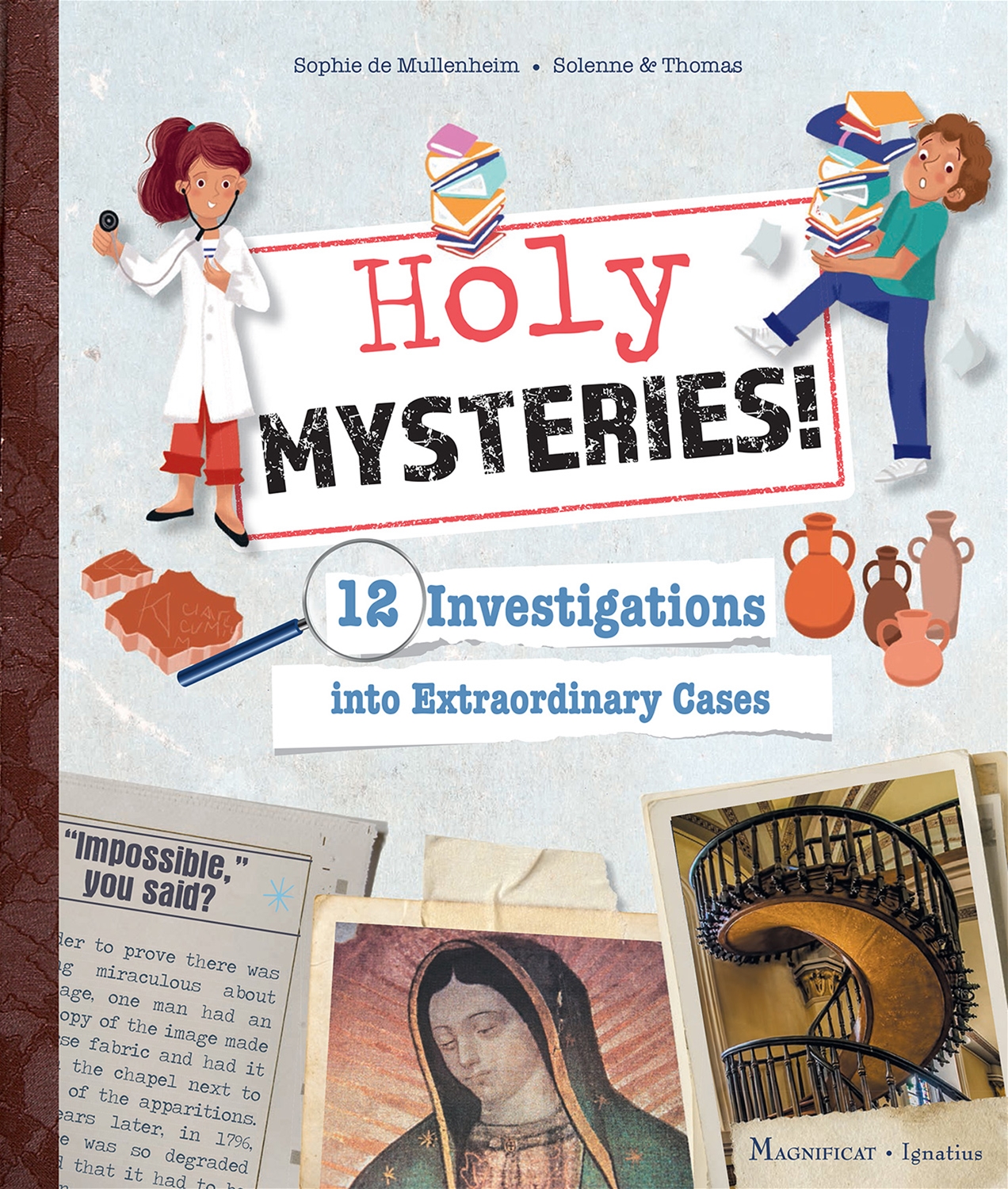
Andrea Bear reviews a book that dives into twelve extraordinary cases verified by the Catholic Church that even science can’t explain.
It almost seems unimaginable to think that miracles could actually exist in modern times. The question of religion and science for many play opposite roles, yet ironically, the two are more in common than modern day might give credit. Countless miracles by the Catholic Church have been (often by non-Catholic agencies) documented, tested, analyzed, and recorded throughout the centuries. And while the Church has such examples, they don’t depend on the role of miracles for the deposit of faith. But a couple of questions come to mind: first, if the Church does not need these as evidence, why do these miracles take place and how do we know if in fact something is deemed worthy of the title miracle? Second, is it possible that God realizes some of us are the “doubting Thomas” who needs that extra convincing?

Holy Mysteries by Sophie de Mullenheim and Solenne & Thomas dive into twelve extraordinary cases of miraculous circumstances that use both science, history, and a little divine intervention to influence even the strongest skeptic. The book is catered toward a young reader but sophisticated enough to help the wisest and curious adult minds.
A few examples mentioned in the book include the story of Our Lady of Guadalupe. Most people know the tilma displays the image of the Virgin Mary that emerged in 1531, when Juan Diego presented the image to the local priest in Mexico City. While this is a well-known and well documented miracle, the author provides several pieces of scientific evidence beyond the general knowledge by utilizing modern day technological testaments and investigations. One instance points to the stars on Mary’s mantle on the tilma Juan Diego wore the day he presented the roses to the priest. Many scientists (including NASA scientists) have analyzed the fibers and colors on the cactus fabric confirming it should have decayed long ago. But the book goes further to points out other scientific and inquiring features such as the stars on Mary’s mantle are arranged on the image in the exact celestial alignment as on the night of December 12, 1531, the day on which the miracle took place.
Another case included in the book is the discovery of many saints whose bodies have been found to be incorrupt, some as old as the seventh century. The book provides an array of examples from St. Catherine Labouré to St. Teresa of Ávila whose bodies should have long ago decayed under harsh burial environments (exposure to limestone, or humid or damp burial grounds) and are still intact and look as supple and elastic as if the day they died. A couple of examples included are the rose-scented body of Padre Pio, and fresh blood that still oozes from the body of St. Charbel of Lebanon.
Reading this book illuminates the fact that there are so many unknowns to the divine and scientific world. While the book itself does not intend to prove or make any formal claims, it certainly emphasizes that these mysteries can marvel even the most scientific expert. Holy Mysteries is a great read for anyone who wants to look further into science, investigate into divine encounters, and help and educate readers young and old who might already have doubts in their faith.
Copyright 2021 Andrea Bear
Image: Canva Pro
About the Author

Andrea Bear
Andrea Bear is a wife, mom, and teacher in Stockton, California. In addition to CatholicMom.com, she also writes for HerLife Magazine and Catholic Stand. She is the award-winning author of Catholic fiction, Grieving Daughters Club. When she's not writing or taking her kids to volleyball practice, you can find her sipping coffee from neighborhood coffee establishments or tasting wine from local vineyards. Visit AndreaBearAuthor.com.


.png?width=1806&height=731&name=CatholicMom_hcfm_logo1_pos_871c_2728c%20(002).png)
Comments